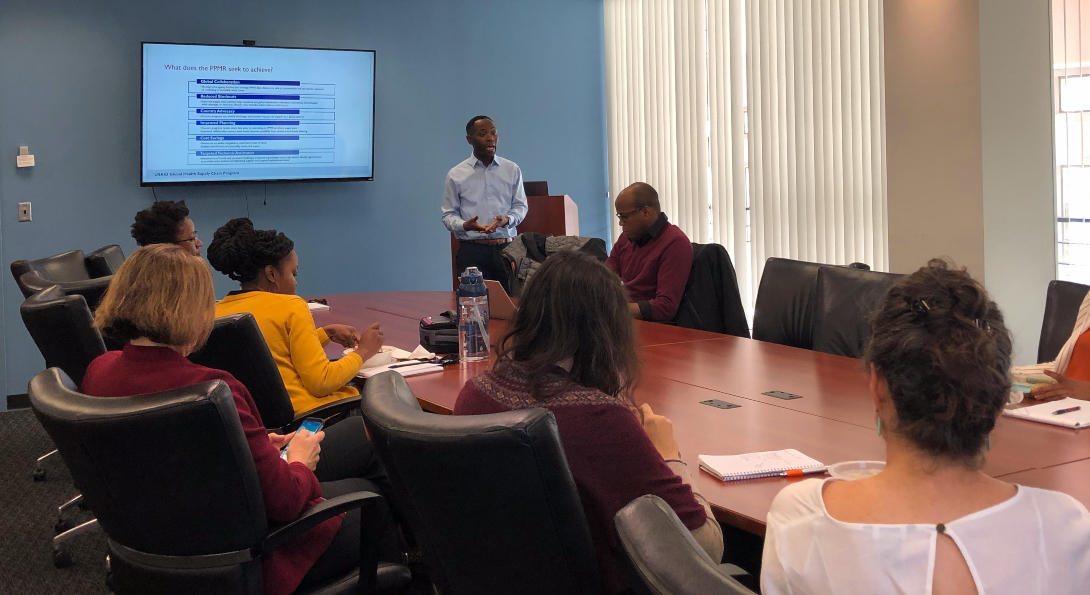Strengthening Global Health Supply Chains for Women’s Health

Story text
Tamah Kamlem’s job as a global health supply chain data analyst is big picture work, but his travel to countries across the continent of Africa, southeast Asia and the Caribbean brings the work into focus.
“When I go into countries and I see the need that is on the ground, I understand how critical this work is,” Kamlem said. “Making sure a country has enough medical supplies and their supply chain works efficiently to bring the right product to the right people at the right time, it saves lives.”
Working with the U.S. Agency for International Development’s (USAID) Global Health Supply Program in the Washington, D.C. area, Kamlem supports field offices across the world in supply chain management, project management and operation, primarily in the areas of sexual and reproductive health. As a 2015 graduate of the BA in Public Health program at the University of Illinois at Chicago (UIC) School of Public Health, he analyzes gaps in the supply of commodities and products needed to strengthen health outcomes for women and coordinates with international funders to meet these needs.
As shortages are identified, Kamlem coordinates with public funders like USAID and the United Nations Development Programme, as well as private groups like the Bill and Melinda Gates Foundation, to fund purchases and ship supplies worldwide. In the field, Kamlem travels across the globe to work with ministries of health and regional healthcare staff to conduct trainings on best practices in usage and maintenance of medicines and other healthcare tools aimed at maternal and child health.
Like in virtually all aspects of public health, the COVID-19 pandemic has forced a rethinking of Kamlem’s work. Demand for healthcare products is increasing as shelter-in-place orders are lifted, but supply chains are still disrupted. Airports and ocean ports remain closed, and hospitals and clinics are seeing surges in demand from people who skipped needed healthcare as the virus spread.
To mitigate these effects, Kamlem is analyzing how neighboring countries may be able to provide support, as opposed to flying in products from across the globe. He makes recommendations to ministries of health on altering distribution cycles, increasing stockage and moving supplies from centralized levels to local clinics.
Selected Quote
One of the big aspects of my work is training stakeholder personnel to capture data, to build a strong recording system within countries. All the decisions we make are data-driven, and if there is no evidence, it’s very difficult to provide the level of technical support we do.”
| BA In Public Health '15
Story text, continued.
Kamlem led similar efforts with a USAID project centered in Liberia, where he implemented a national survey of child health in African nations to identify discrepancies in how child health is assessed across countries, with a goal of creating more uniform standards to track child health outcomes.
As a native of Cameroon, with fluency in seven languages, Kamlem says honoring cultural relevancy is key to navigating the social and cultural contexts of global health. He says global health professionals need to understand prevailing attitudes and practices of a nation or region and recognize stakeholders have different objectives.
“Ultimately, it’s bringing all these stakeholders to see and share a common vision, and to work toward achieving that vision,” Kamlem said. “Global health can seem abstract, but the impact we can have is tremendous.”